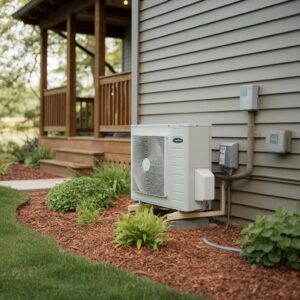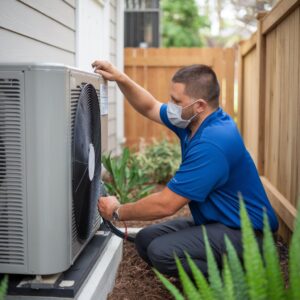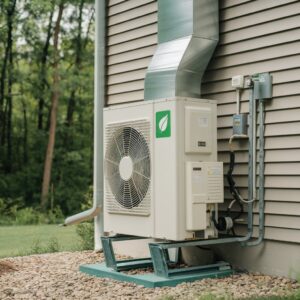Backflow testing is a critical process that guarantees the integrity of plumbing systems by verifying the operation of backflow prevention devices. It maintains water quality and pressure by preventing contaminants from flowing into potable water supplies. The inspection involves evaluating pressure differentials at device locations and documenting compliance with safety standards. Regular testing safeguards against health risks, guaranteeing clean, safe drinking water. To understand more about its importance and procedure, further exploration is encouraged.
Key Takeaways
- Backflow testing ensures that water flows unidirectionally, preventing contamination of the clean water supply.
- The process involves examining prevention devices using specialized equipment like test kits and pressure gauges.
- Regular backflow testing maintains consistent water pressure and detects potential plumbing issues early.
- Testing documentation confirms compliance with safety regulations, safeguarding public health.
- Selecting a qualified backflow plumbing service ensures thorough inspections and reliable test result submissions.
What is Backflow, and Why is it a Concern?
Backflow occurs when water flows in the reverse direction, potentially due to changes in pressure, and can introduce contaminants into the potable water supply.
This backflow can result in significant health hazards as it may carry pollutants, chemicals, or pathogens from various sources.
Consequently, implementing robust backflow prevention measures is critical to ensuring the integrity and safety of the water distribution system.
Understanding Backflow: Causes and Consequences
When water flows in the opposite direction from its intended path within a plumbing system, this phenomenon is known as backflow, a critical issue in maintaining safe and potable water supplies.
Backflow can lead to water contamination, introducing pollutants into the water system, which poses risks to public health. The disruption of normal water pressure is a common cause, often due to a sudden drop in the main water supply or an increase in pressure downstream.
Plumbing systems are designed for flow in one direction, and backflow preventers are essential components that guarantee backflow prevention. These devices are installed to maintain proper water pressure and prevent contaminated water from compromising the safety and integrity of the water supply.
How Backflow Can Contaminate Your Water Supply
Understanding the mechanisms that lead to backflow is important for appreciating its potential impact on water safety. Backflow occurs when the pressure in water pipes drops, allowing contaminated water to reverse flow into the clean water supply. This can introduce pollutants into drinking water, posing potential health hazards.
Regular water backflow tests are essential for detecting such risks within the plumbing system. A backflow test evaluates the effectiveness of backflow prevention devices, ensuring they function correctly to prevent backflow and keep water uncontaminated.
Without proper backflow prevention, industrial chemicals, bacteria, or other harmful substances can infiltrate the water supply. These preventive measures are significant to maintaining the safety and purity of drinking water, emphasizing the need for vigilance in plumbing systems.
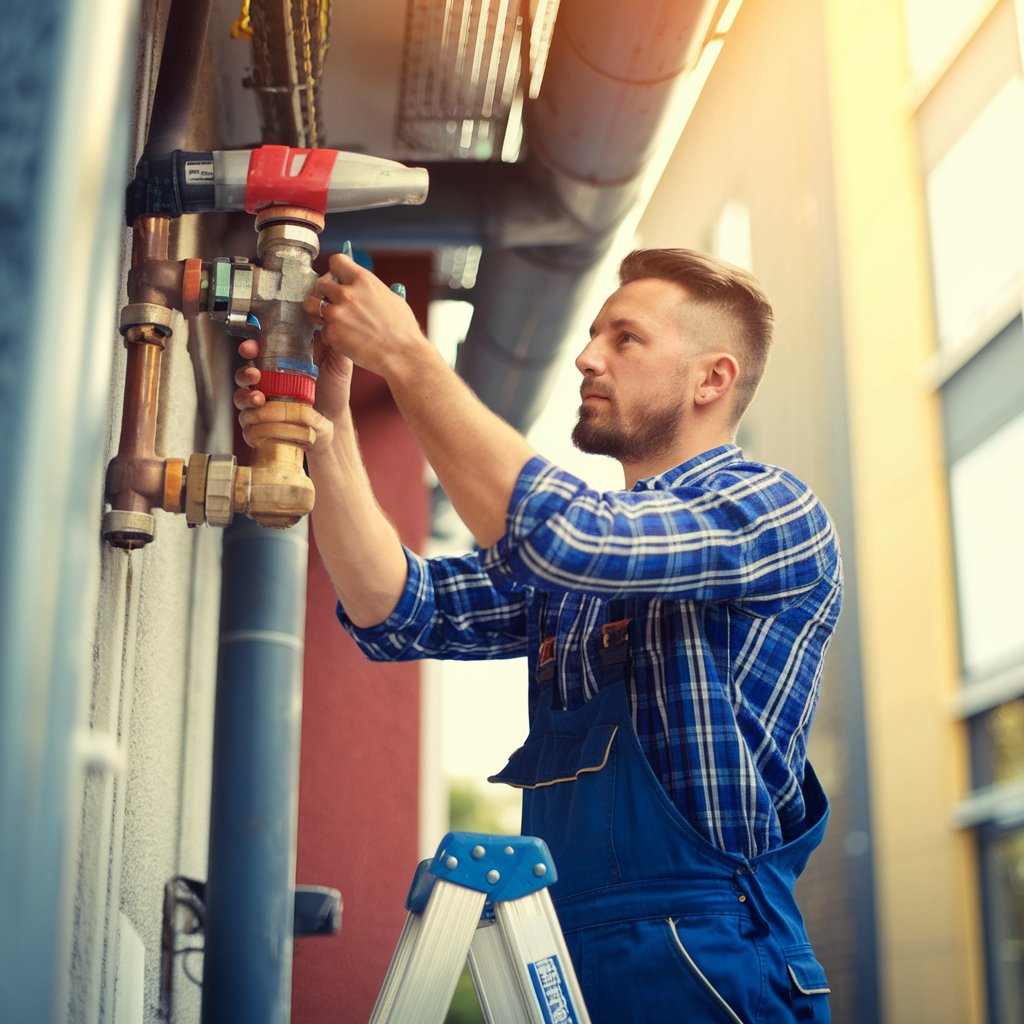
The Importance of Backflow Prevention in Maintaining Clean Water
Though often overlooked, the prevention of backflow is a critical component in maintaining the integrity of clean water systems.
Backflow prevention systems are essential to safeguard clean drinking water from contamination. The backflow preventer device acts as a barrier, guaranteeing that water flow remains unidirectional, thereby protecting the public water supply.
Regular plumbing services are necessary to maintain these systems. Annual backflow testing performed by a certified backflow tester is recommended to verify peak functionality. This inspection helps identify potential failures or leaks that could compromise water quality.
Why Do You Need a Backflow Test and Inspection?
Regular backflow testing is essential for safeguarding drinking water from contaminants that can reverse flow into the potable water system.
Determining the appropriate frequency for these tests is vital, often guided by local regulations and specific system demands.
A certified backflow tester plays a critical role in ensuring compliance and maintaining water safety standards through meticulous inspections and assessments.
Protecting Your Drinking Water with Regular Backflow Testing Done.
To safeguard the integrity of drinking water, implementing a system of regular backflow testing and inspection is vital. A backflow test verifies that the drinking water system remains uncontaminated by confirming the functionality of backflow preventers. Engaging a certified backflow tester for an annual test is critical to maintain clean water lines and protect the municipal water supply. By monitoring water pressure and conducting thorough backflow inspections, any potential plumbing issues can be mitigated. This proactive approach guarantees the continual supply of clean, safe drinking water.
| Key Aspect | Importance | Frequency |
|---|---|---|
| Backflow Test | Verifies water system integrity | Annual Test |
| Certified Tester | Guarantees accurate inspection | Vital |
| Backflow Preventer | Protects against contamination | Regular Check |
When and How Often Should Backflow Testing Be Performed?
Recognizing the significance of maintaining uncontaminated drinking water through regular backflow testing, it is imperative to understand the ideal timing and frequency for these tests.
Backflow testing should be performed annually to guarantee water pressure remains consistent and that no backflow occurs. Property owners must adhere to local regulations, which often mandate annual testing of backflow preventer devices.
Certified backflow testers conduct these evaluations to guarantee compliance and effectiveness. The frequency of testing is required to prevent contamination and guarantee the integrity of the water supply.
The Role of a Certified Backflow Tester in Ensuring Water Safety
Guaranteeing water safety necessitates the expertise of a certified backflow tester, who plays a vital role in safeguarding potable water supplies.
A backflow test is essential to confirm that prevention devices are functioning as intended. Certified backflow testers conduct water backflow tests to verify these devices are working properly, preventing contamination.
The testing process involves detailed backflow prevention and testing measures that identify any potential failures in the system. Regular backflow testing is imperative for maintaining water safety, as it detects issues before they compromise water quality.
Testing performed by a certified backflow tester guarantees compliance with health regulations and standards. Their expertise ensures that any anomalies are promptly addressed, maintaining the integrity of the water supply system.
How is a Backflow Test Performed?
Backflow testing involves a systematic examination of the backflow prevention devices to guarantee they function correctly and protect potable water supplies.
Technicians employ specialized equipment such as backflow test kits, pressure gauges, and shut-off valves to assess the integrity and performance of these devices.
Understanding the steps involved, including visual inspections and pressure differential measurements, is essential for maintaining compliance with safety standards.

Steps Involved in the Backflow Testing Process
Conducting a backflow test requires a systematic approach to guarantee the integrity of potable water systems.
First, a certified plumber or tester identifies the location of the backflow device within the plumbing system. The backflow assembly is often connected to irrigation systems or sprinkler lines.
Next, the tester shuts off the water supply to isolate the valve. They then attach specialized equipment to the test cocks on the backflow device to measure pressure differences and assess functionality.
Ensuring the valves operate correctly is essential for preventing contamination. If the test reveals any issues, necessary repairs or replacements are conducted.
Once the test is completed, the water is restored, and documentation is provided to confirm compliance with safety regulations.
Equipment and Tools Used in Backflow Preventer Testing
A crucial array of specialized tools and equipment is employed in performing a backflow test, ensuring accurate and reliable results.
Backflow testing is performed to ascertain the proper functioning of backflow preventer valves. These prevent contaminants from entering the water main or irrigation system backflow.
During installation and testing, specific tools are required:
- Test Kit: This includes differential pressure gauges and hoses to measure the pressure across the backflow preventer valves, confirming their functionality.
- Shut-off Tools: Valves are temporarily closed to halt the water flow, allowing precise control of the testing process.
- Plumbing Essentials: Wrenches and plumb tools are necessary for accessing, adjusting, and securing components, ensuring the plumbing provides a sealed and effective backflow prevention system.
Testing helps maintain water safety.
Understanding the Role of Backflow Devices
When preventing contamination in water systems, understanding the role of backflow prevention devices is vital. A backflow preventer is a device designed to protect the drinking water supply from pollutants or contaminants that could enter public water systems.
Properly install backflow preventers to guarantee they function effectively, especially where plumbing is available. These devices allow water to flow in a single direction, preventing any reverse flow that might compromise water service.
Installation and annual testing are important since these systems require annual testing to maintain peak performance. A water backflow test assesses the integrity of the device to confirm it reliably safeguards the drinking water supply. Compliance with these measures guarantees the safety and purity of public water systems.
How Backflow Affects Water Pressure and Plumbing Systems
Backflow can considerably alter water pressure, often resulting in low or inconsistent levels that affect the efficiency of the plumbing system. It’s important to regularly check your plumbing system to make sure it is functioning properly and to prevent potential issues.
The intrusion of contaminated water poses a threat to household plumbing by introducing sediments and corrosive substances that may lead to clogs or deterioration of the infrastructure.
Warning signs of a potential backflow issue include sudden changes in water pressure, discolored water, or unusual tastes and odors.
Can Irrigation System Backflow Cause Low or Inconsistent Water Pressure?
While backflow is a significant concern for water quality, its impact on water pressure is often overlooked. A backflow test is essential to identify issues that can lead to a drop in water pressure.
When plumbing today is compromised by dirty water or a water leak, the need backflow prevention becomes evident. To maintain consistent water pressure, it is important to install backflow prevention systems. Testing is significant for maintaining ideal pressure levels and ensuring system integrity.
Schedule your backflow inspections regularly to prevent:
- Inconsistent Water Pressure: Fluctuations may indicate backflow issues.
- Water Contamination: Backflow can introduce pollutants, affecting pressure and safety.
- Plumbing Damage: Persistent backflow may result in leaks or pipe deterioration.
These measures are essential for safeguarding water systems.
How does contaminated water impact your home’s plumbing?
Contaminated water poses a significant threat to a home’s plumbing infrastructure, leading to both immediate and long-term detrimental effects.
Water backflow, often resulting from water main breaks or improper connections in sprinkler systems and lawn irrigation, introduces contaminants, including human waste, into clean water supplies. This contamination can corrode pipes, damage fixtures, and reduce the efficacy of plumbing systems.
A backflow test is vital in detecting such issues early, preventing potential health hazards and costly repairs. Regular testing done by professionals guarantees that any water backflow is identified and corrected promptly.
What signs indicate a potential backflow problem?
- Water Contamination: Indicators include discolored water, an unusual taste, or a foul odor.
- Plumbing Inspection: Regular checks can detect issues early. A thorough plumbing inspection guarantees components are functioning correctly, preventing potential hazards.
Identifying these signs promptly allows for timely intervention, safeguarding against the risks associated with backflow. Maintaining vigilance in plumbing systems is essential for preventing water contamination and guaranteeing overall water safety.
Choosing the Right Plumbing Services for Backflow Prevention
When selecting plumbing services for backflow prevention, it is crucial to evaluate the plumber’s qualifications, such as certifications and experience specific to backflow systems.
Prospective clients should prepare pertinent questions to ascertain a tester’s familiarity with local regulations and testing procedures.
Additionally, understanding the cost structure for backflow testing services, including any potential hidden fees, guarantees informed decision-making.
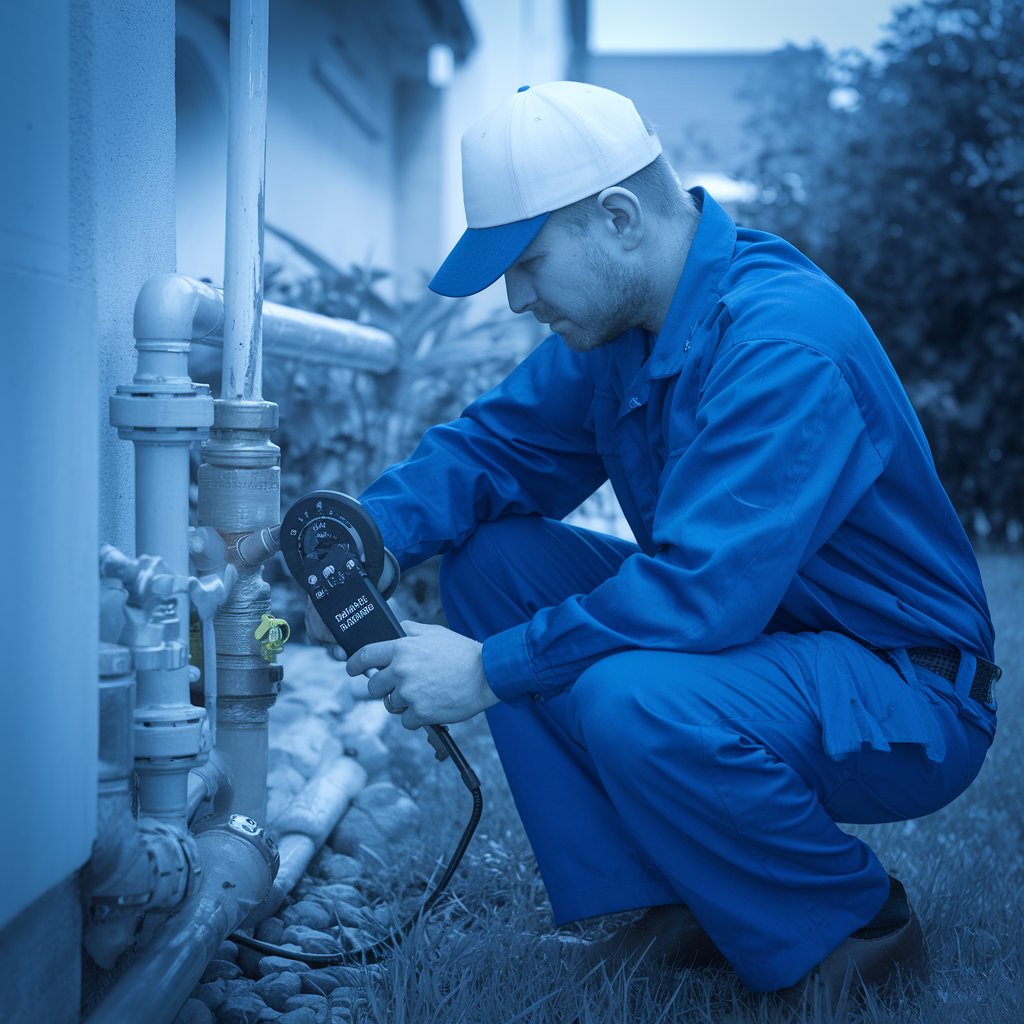
Qualities to Look for in a Backflow Plumber
How can one guarantee the integrity and safety of a plumbing system when selecting a backflow plumber? It is essential to focus on specific qualities to guarantee optimal backflow prevention.
- Certification and Licensing: The plumber must be licensed and certified to conduct a backflow test, confirming they meet industry standards for water pressure and inspection proficiency.
- Experience and Reliability: A seasoned professional with a proven track record in backflow prevention and maintenance is critical. Their experience will confirm that they can handle complex systems efficiently.
- Attention to Detail: Precision and thoroughness in conducting inspections are essential. A reliable plumber will meticulously test and maintain systems to prevent future issues.
These qualities collectively guarantee a secure and efficient plumbing system.
Questions to Ask When Hiring a Certified Backflow Tester
What essential questions should one pose to ascertain they hire a qualified backflow tester? To begin with, inquire, “What is a backflow test?” to establish understanding. Confirm “Who does backflow testing?” by verifying the tester’s certification. Ask, “How long does a backflow test take?” to manage time expectations for home or business. Clarify “How often do I need my backflow tested?” to guarantee regular backflow prevention aligned with local regulations.
| Question | Importance |
|---|---|
| What is a backflow test? | Ensures understanding of services |
| Who does backflow testing? | Confirms certification |
| How often do I need my backflow tested? | Promotes regular testing |
Finally, determine if the tester will submit the test results and conduct a thorough plumbing inspection to maintain ideal water pressure.
Cost Considerations: What to Expect for Backflow Testing Services
Understanding the financial implications of backflow testing services is essential for homeowners and businesses aiming to maintain compliant and safe water systems. Recognizing what a water backflow test is and its associated costs involves several factors. Here are key considerations:
- Frequency and Necessity: The need for testing often depends on local regulations, requiring annual inspections to guarantee the system’s integrity. The frequency can impact costs over the long term.
- Scope of Work: Costs may vary based on the complexity of the system, including backflow preventer size and type. More intricate systems may take longer to test, increasing expenses.
- Service Provider Selection: Choosing certified professionals guarantees accurate testing, potentially reducing future repair costs. Evaluating multiple service providers can offer competitive pricing.
Conclusion
In summary, backflow testing is critical for maintaining safe and efficient plumbing systems. By preventing the reverse flow of contaminated water into clean water supplies, it safeguards public health and guarantees compliance with local regulations. Regular inspections and tests identify potential issues early, preserving water pressure and overall system integrity. Selecting a qualified plumbing service for backflow prevention is essential for achieving reliable, long-term solutions that protect both infrastructure and public safety.

